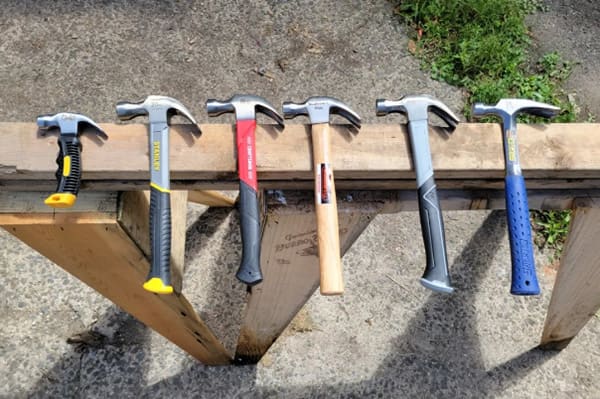In the world of construction and DIY projects, the claw hammer is a quintessential tool that no toolbox should be without. It is versatile, durable, and indispensable for a wide range of tasks, from driving nails into wood to pulling them out. But with so many variations of claw hammers available, how do you determine which is the best type for your needs?
Understanding the Basics of a Claw Hammer
Before diving into the specifics of what makes one claw hammer better than another, it's important to understand the basic structure of this tool. A typical claw hammer has a steel head with two primary parts: the face and the claw. The face is the flat, round surface used to drive nails, while the claw, typically curved and split, is used to remove nails or pry apart pieces of wood.
The handle of a claw hammer can be made from different materials, including wood, fiberglass, or steel, each offering distinct advantages in terms of comfort, durability, and shock absorption.
Factors to Consider When Choosing a Claw Hammer
When selecting the best claw hammer, several key factors come into play, including weight, handle material, balance, and the shape of the claw. Let’s break down these elements to understand how they contribute to the overall performance of the tool.
Weight of the Hammer
One of the most crucial factors to consider is the weight of the hammer. Claw hammers typically range from 16 to 20 ounces, with lighter hammers being more suitable for delicate tasks and heavier ones offering more driving power. The best weight for a claw hammer largely depends on the user's strength and the type of work being done. For general-purpose use, an 18-ounce hammer is often recommended as it provides a good balance between power and control.
Handle Material
The material of the handle significantly affects the hammer's comfort and durability. Wooden handles, usually made from hickory, offer a classic feel and excellent shock absorption, reducing the strain on the user's hand and wrist during prolonged use. However, they can be prone to breaking under heavy use.
Fiberglass handles are known for their strength and durability. They also offer good shock absorption and are often preferred by those who need a more resilient tool that can withstand rough treatment.
Steel handles are the most durable but can transmit more vibration to the user’s hand, leading to discomfort during extended use. However, many steel-handled hammers come with rubber or cushioned grips to mitigate this issue.
Balance and Ergonomics
A well-balanced hammer is easier to use and reduces fatigue. The balance between the head and the handle should allow the hammer to swing smoothly without tipping too far forward or backward. Ergonomically designed handles with a comfortable grip can make a significant difference, especially for users who work with hammers regularly. A hammer with a curved handle, for example, can offer better leverage and reduce the risk of hand strain.
Claw Shape and Design
The claw of the hammer is another important consideration. Claw hammers generally come with either a curved claw or a rip claw. A curved claw is ideal for removing nails with precision, while a rip claw is straighter and better suited for prying apart boards or demolition work.
For general carpentry and DIY tasks, a hammer with a curved claw is usually the best choice, as it offers versatility in both driving and removing nails. However, for more heavy-duty construction work, a rip claw may be more beneficial.
The Best Claw Hammer on the Market
Given the considerations of weight, handle material, balance, and claw design, one of the top recommendations for the best claw hammer is the Estwing E3-16S. This 16-ounce hammer features a solid steel construction, offering exceptional durability and strength. It also comes with a shock-reduction grip, which minimizes vibration and provides a comfortable hold, making it suitable for extended use.
Another excellent option is the Stiletto TiBone TB15MC, which, although more expensive, is renowned for its lightweight titanium construction. This hammer offers the same driving power as a steel hammer but with significantly less weight, reducing fatigue. Its ergonomic handle and excellent balance make it a favorite among professional carpenters and contractors.
Conclusion
Choosing the best claw hammer depends on the specific needs of the user and the type of work they intend to perform. For general-purpose tasks, a well-balanced hammer with a curved claw and a comfortable handle, like the Estwing E3-16S, is an excellent choice. However, for those who require a lighter tool with more advanced features, the Stiletto TiBone TB15MC stands out as a top contender.
Ultimately, the best type of claw hammer is one that feels comfortable in your hand, suits the task at hand, and is built to last. Investing in a high-quality hammer can make all the difference in your projects, ensuring precision, efficiency, and safety every time you pick it up.
Post time: 08-20-2024






